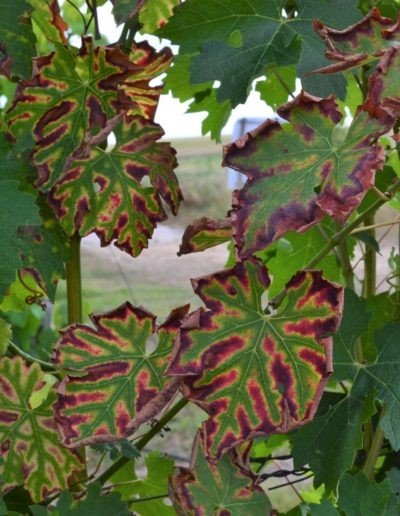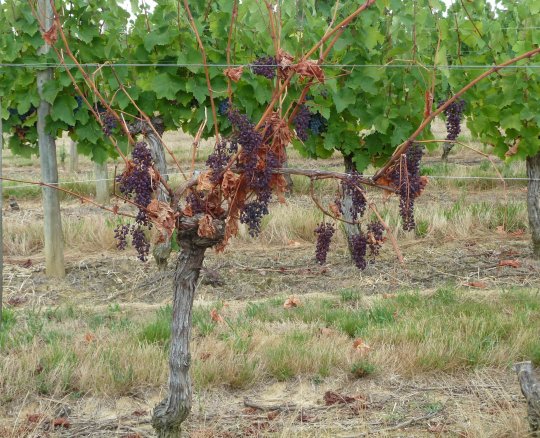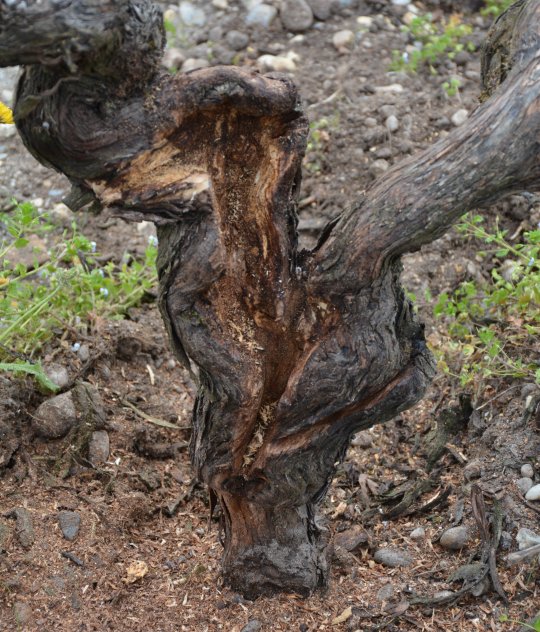What are the symptoms and consequences of ESCA in the vineyard?
The "tiger-stripe" leaf symptoms that characterize Esca's slow form appear around véraison and regularly during the entire growth period. They affect either the whole vine, or a single arm, or a few branches. The leaves on the lower part are affected first. It is important to note the extreme variability of the expression of the symptoms from one year to the next. A diseased vine one year may very well appear healthy the next year.
In white grape varieties, leaf symptoms are characterized by the presence of small, milky yellow spots, on the leaves' surface, and necrotic spots delimited by a milky yellow border, most often at the edge of the leaf.





